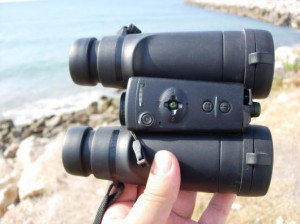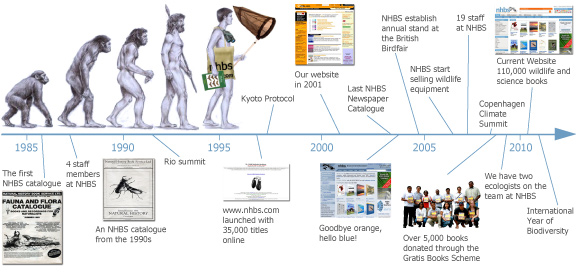Over the past 20 years dramatic declines have taken place in UK insect populations. Eventually, such declines must have knock-on effects for other animals, especially high profile groups such as birds and mammals. This authoritative, yet accessible account details the current state of the wildlife in Britain and Ireland and offers an insight into the outlook for the future.
Written by a team of the country’s leading experts, it appraises the changes that have occurred in a wide range of wildlife species and their habitats and outlines urgent priorities for conservation. It includes chapters on each of the vertebrate and major invertebrate groups, with the insects covered in particular depth. Also considered are the factors that drive environmental change and the contribution at local and government level to national and international wildlife conservation. Essential reading for anyone who is interested in, and concerned about, UK wildlife.
With a foreword by Sir David Attenborough.
About Silent Summer: The State of Wildlife in Britain and Ireland
Over the past 20 years dramatic declines have taken place in UK insect populations. Eventually, such declines must have knock-on effects for other animals, especially high profile groups such as birds and mammals. This authoritative, yet accessible account details the current state of the wildlife in Britain and Ireland and offers an insight into the outlook for the future.
Written by a team of the country’s leading experts, it appraises the changes that have occurred in a wide range of wildlife species and their habitats and outlines urgent priorities for conservation. It includes chapters on each of the vertebrate and major invertebrate groups, with the insects covered in particular depth. Also considered are the factors that drive environmental change and the contribution at local and government level to national and international wildlife conservation. Essential reading for anyone who is interested in, and concerned about, UK wildlife.
With a foreword by Sir David Attenborough. Buy Silent Summer now from NHBS
What the reviewers say about Silent Summer
Silent Summer is “like a Domesday Book of British Wildlife”, according to its editor, Professor Norman Maclean. In a foreword, Sir David Attenborough warns that “it is invaluable now and in the future it will be irreplaceable”. Will any real action be taken? Of course not. Silent Spring, Rachel Carson’s masterpiece, alerted the world in 1962 to the effects of agricultural pollutants such as DDT and in many ways launched today’s environmental movement. Silent Summer raises more complex and local questions. Terence Blacker, The Independent
Now, in an echo of that breakthrough publication, Sir David Attenborough has written the foreword to a new book, Silent Summer. Since Silent Spring we thought we had learnt a lot. But, as Sir David and 40 ecologists make clear, that is not so. Our wildlife is in retreat thanks to modern farming and the encroachment of urban life on the countryside. The Times
Published in 1962, Silent Spring helped launch the global environmental movement and, in Britain, prompted an eventual ban on pesticides such as DDT. Maclean believes, however, that such triumphs have done little to slow the destruction. “The evidence is that we could be in the middle of the next great extinction of wildlife, both globally and in Britain,” he said.
Butterflies are among the hardest hit of insect groups. Five species are extinct and, of the 59 that regularly breed in Britain, most have seen sharp declines in population. Jeremy Thomas, professor of ecology at Oxford University, who wrote Silent Summer’s chapter on butterflies, said populations were falling faster than almost any other group. The reason, he suggests, is that the caterpillars of many species need particular plant species to feed on — but these are often targeted by farmers as weeds. “Nearly every butterfly decline can be attributed to habitat loss or the degradation and increased isolation of surviving patches of habitat,” he said. Jonathan Leake in The Times
Perhaps what I’m excitedly photographing and noting today is the cliched ‘pale shadow’ of twenty years ago. I may be incredibly lucky in that I’m seeing something that in terms of biodiversity is equivalent to fifty or even a hundred years ago, but there’s no way of knowing. 10000birds.com
A new major environmental book, entitled Silent Summer: The State of Wildlife in Britain and Ireland, offers up disturbing facts and figures about the human impact on nature in the British Isles. Celebrated naturalist, broadcaster and national treasure Sir David Attenborough has penned the forward to the book, a collaborative effort by 40 UK ecologists, which outlines the impacts of pesticides, population growth and intensive farming on British and Irish flora and fauna. Greenfudge.com
Prof Maclean argues that “the evidence is that we could be in the middle of the next great extinction of wildlife, both globally and in Britain.” Nick Collins, The Telegraph
Buy Silent Summer now from NHBS
Contents of Silent Summer
List of contributors; Foreword David Attenborough; Preface; Acknowledgements; List of abbreviations;
1. Introduction Norman Maclean; Part I. Factors Driving Changes in Wildlife: 2. Climate change T. H. Sparks, C. D. Preston and D. B. Roy; 3. Agriculture, woodland and semi-natural habitats Ken Norris; 4. Vertebrate animal introductions Christopher Lever; 5. Plant introductions Andrew Lack; 6. Urbanisation and development Kevin J. Gaston and Karl L. Evans; 7. The great game: the interaction of field sports and conservation in Britain from the 1950s to 2008 Robin Sharp; 8. Going fishing: recent trends in recreational angling Robin Sharp and Norman Maclean; 9. Impacts of hormone disrupting chemicals on wildlife C. R. Tyler and R. M. Goodhead; 10. Water pollution: other aspects Michael Hughes and Carl Sayer; 11. 25 key questions in ecology Norman Maclean; Part II. Conservation in Action: 12. Conservation in action in Britain and Ireland Andy Clements; 13. Wildlife in the UK Overseas Territories Mike Pienkowski; 14. UK involvement in conservation outside UK territory N. Leader-Williams and A. M. Rosser; Part III. The Case Histories: 15. Mammals in the 20th century D. W. Yalden; 16. Bats Karen A. Haysom, Gareth Jones, Dan Merrett and Paul A. Racey; 17. State of bird populations in Britain and Ireland Robert A. Robinson; 18. The conservation of the Grey Partridge N. W. Sotherton, N. J. Aebischer and J. A. Ewald; 19. Reptiles Chris P. Gleed-Owen; 20. Amphibians Tim Halliday; 21. Freshwater fishes: a declining resource Peter S. Maitland and John F. Craig; 22. Riverflies Cyril Bennett and Warren Gilchrist; 23. Bumblebees Dave Goulson; 24. Butterflies J. A. Thomas; 25. Moths Richard Fox, Kelvin F. Conrad, Mark S. Parsons, Martin S. Warren and Ian P. Woiwod; 26. Dragonflies (Odonata) in Britain and Ireland Peter Mill, Steve Brooks and Adrian Parr; 27. Flies, beetles and bees, wasps and ants (Diptera, Coleoptera, and Aculeate Hymenoptera) Alan Stubbs; 28. Hemiptera Alan J. A. Stewart and Peter Kirby; 29. Grasshoppers, crickets and allied insects Judith Marshall; 30. Aerial insect biomass: trends from long-term monitoring Richard Harrington, Chris R. Shortall and Ian P. Woiwod; 31. Invertebrates Richard Chadd and Brian Eversham; 32. Land and freshwater molluscs Ian J. Killeen; 33. The sea shore S. J. Hawkins, H. E. Sugden, P. S. Moschella, N. Mieszkowska, R. C. Thompson and M. T. Burrows; 34. The offshore waters John Baxter; 35. Plants Andrew Lack; 36. Conclusion: what is the likely future for the wildlife in Britain and Ireland? Norman Maclean; Glossary; Index.
Bio of Norman Maclean
Norman Maclean is Emeritus Professor of Genetics at Southampton University and has a strong interest in wildlife, conservation and river management. He has helped to run student field courses for more than 20 years and has authored and edited more than a dozen textbooks and reference books in Genetics and Cell Biology. He is an Elected Fellow of the Linnaean Society and the Institute of Biology.
Buy Silent Summer now from NHBS
 The choice of new books in stock at NHBS this week is inspiring in its variety. Our favourite has to be the World Atlas of Mangroves. The detail in this inventory of biodiversity, habitat area, habitat loss and economic value for mangroves in 124 countries is extraordinary and we salute this beautifully produced feat of data collation. Highly recommended.
The choice of new books in stock at NHBS this week is inspiring in its variety. Our favourite has to be the World Atlas of Mangroves. The detail in this inventory of biodiversity, habitat area, habitat loss and economic value for mangroves in 124 countries is extraordinary and we salute this beautifully produced feat of data collation. Highly recommended.





 The incredibly popular
The incredibly popular  You will not have too much trouble spotting the new background image on
You will not have too much trouble spotting the new background image on 
